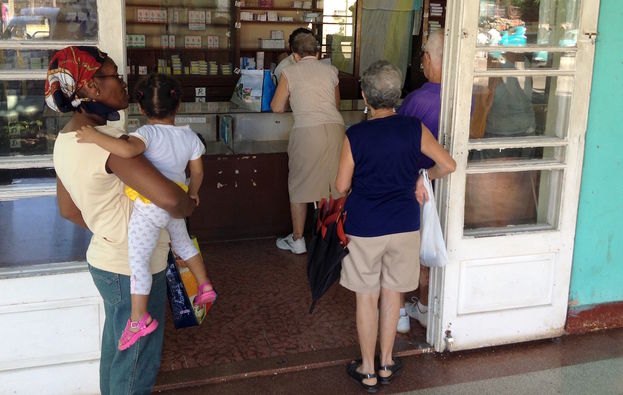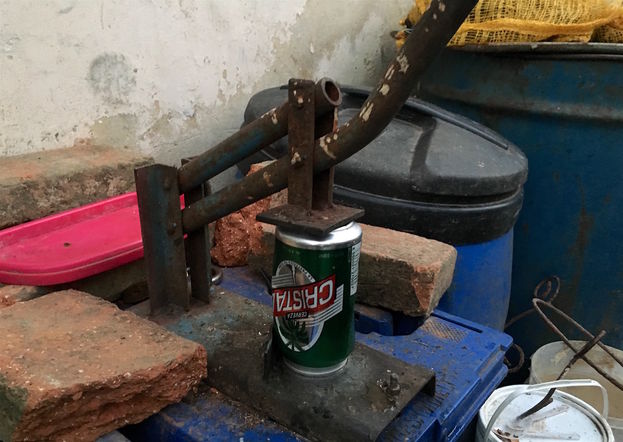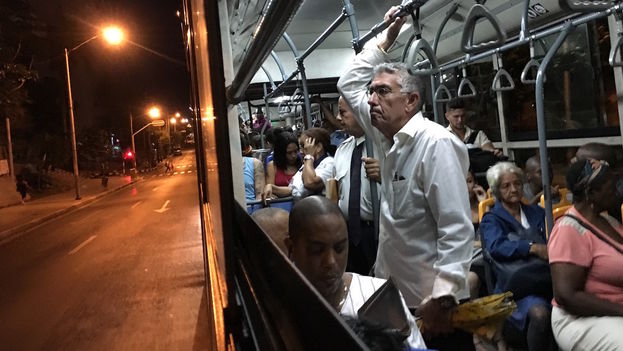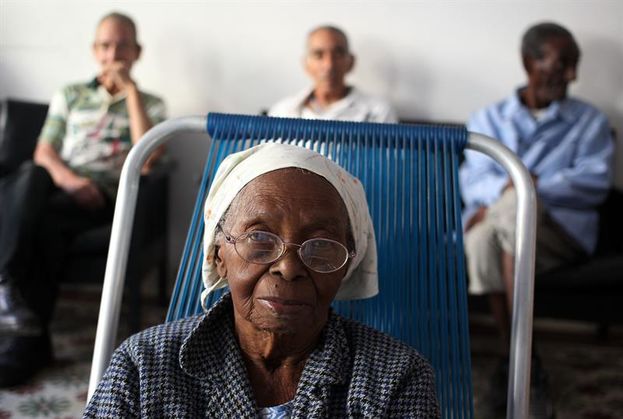
![]() 14ymedio, Luz Escobar/Mario Penton, Havana/Miami, 6 March 2017 — At age 67, struck by old age and a miserable pension, Raquel, an engineer “trained by the Revolution,” scavenges among the garbage for the sustenance of each day. Her hands, which once drew maps and measured spaces where promising crops would grow, are now collecting cartons, cans and empty containers.
14ymedio, Luz Escobar/Mario Penton, Havana/Miami, 6 March 2017 — At age 67, struck by old age and a miserable pension, Raquel, an engineer “trained by the Revolution,” scavenges among the garbage for the sustenance of each day. Her hands, which once drew maps and measured spaces where promising crops would grow, are now collecting cartons, cans and empty containers.
“My last name? Why? And I don’t want any photos. I have children and I had a life. I don’t want people to talk about me,” she says while agreeing to tell her story with a certain air of nostalgia and disappointment. “I never thought I would end up a dumpster diver, one of those who digs through the cans in the corners and is the object of jokes.”
Cuba has become the oldest country in the Americas, according to official data. It has been an accelerated process that surprised even the specialists, who had calculated that the problem would not become acute before 2025.
With a pension system that is unsustainable in the medium term, an economic recession and a foreseeable impact on social services as a result of the aging population, the country is confronting one of the biggest challenges in its history.

“I receive a pension of 240 Cuban pesos a month (less than 10 dollars). From that money I have to spend 50 pesos to pay for the Haier refrigerator that the government gave me [when it switched out older, less energy efficient models] and an additional 100 pesos for the purchase of medicines,” says Raquel.
Although she is retired, the pharmacy does not subsidize the medicines she needs for her diabetes and hypertension. The state welfare program does not include those elderly people living under the same roof with relatives.
“One of the affects on the country of the aging population is a significant increase in public spending and the decline of the population of childbearing age,” explains Juan Valdez Paz, a sociologist based on the island and author of several books on the subject.
According to the Statistical Yearbook of Cuba, health spending fell from 11.3% of GDP in 2009 to 8% in 2012.
Almost 20% of the Cuban population is over 60, and the country’s fertility rate is 1.7 children per woman. In order to compensate for the population decline, it would be necessary to raise that number to 2.4 children for every female of childbearing age. In 2015 there were 126,000 fewer active people than the previous year.

For Valdés, no society is prepared for the demographic difficulties such as those facing Cuba.
One solution could be to increase production or for emigrants to return, according to the specialist. So far both possibilities seem very distant.
In the country there are almost 300 Grandparent Houses (for day care and socialization) and 144 Elder Homes, with a combined capacity of about 20,000 places. The authorities have recognized the poor hygienic and physical situation of many of these premises. Many elderly people prefer to enter the scarce 11 asylums run by religious orders that survive thanks to international aid, an example of which is the Santovenia nursing home, in Havana’s Cerro district.
The cost to use the Grandparents House facilities is 180 Cuban pesos a month, and the Elder Homes cost about 400 Cuban pesos. Social Security grants a subsidy to the elderly who demonstrate to social workers that they can’t pay the cost.
Cuba had one of the most generous and most comprehensive social security systems in Latin America, largely because of the enormous help it received from the Soviet Union, estimated by Mesa-Lago at about 65 billion dollars over 30 years.

“Although pensions were never raised, there was an elaborate system provided by the State to facilitate access to industrial products and food at subsidized prices,” explains the economist.
“It annoys me when I hear about how well they care for older adults. They don’t give me any subsides because I live with my son, my daughter-in-law and my two grandchildren, but they have their own expenses and cannot take care of me,” says Raquel.
“I need dentures and if you don’t bring the dentist a gift they make them badly or it takes months,” she adds.
With the end of the Soviet Union and the loss of the Russian subsidy pensions were maintained but their real value fell precipitously. In 1993, the average retiree could barely buy 16% of what their pension would have bought in 1989. At the end of 2015, the purchasing power of pensioners was half of what it had been before the start of the Special Period, according to Mesa-Lago’s calculations.
Raúl Castro’s administration drastically reduced the number of beneficiaries of social assistance in a process that he called “the elimination of gratuities.” From the 582,060 beneficiaries in 2006, some 5.3% of the population, the number fell to 175,106 in 2015, some 1.5% of the population.
Several products that had previously been supplied to everyone through the ration book were also eliminated, such as soap, toothpaste and matches, and now are only available at unsubsidized prices.

The government has authorized some assistance programs for the elderly. The Family Care System allows more than 76,000 low-income elderly people to eat at subsidized prices, although it is a small figure considering that there are more than two million elderly people in Cuba.
Some elders receive help from churches and non-governmental organizations.
“People see me collecting cans, but they do not know that I was an avant-garde engineer and that I even traveled to the Soviet Union in 1983, in the Andropov era,” Raquel explains.
When she retired, she had no choice but to devote herself to informal tasks for a living. She cleaned the common areas of buildings inhabited by soldiers and their families in Plaza of the Revolution district, until the demands of this work and her age became incompatible.
“They asked me to wash the glass windows in a hallway on the ninth floor. It was dangerous and because I was afraid to fall, I preferred to leave it, even though they paid well,” she says.

For each week of work she was paid 125 Cuban pesos, (about 5 dollars) almost half as much as her pension.
Raquel now collects raw material to sell in state-owned stores, although she confesses that she wants “like mad” to get a contract with a small private canning company to sell her empty bottles and avoid the state company and its delays.
In the patio of her house she has created a tool to crush the cans she collects in the streets.
“In January I made 3,900 Cuban pesos from beer cans. Of course, you have to deduct the 500 pesos that I paid for the place in line, because I can not sleep there lying on a porch. Each bag of cans is worth forty pesos. It is eight pesos for a kilogram of cans.”
In Cuba, there are no official statistics on poverty, and the only data available is old. In 1996 a study concluded that in Havana alone, 20.1% of the population were “at risk of not meeting some essential needs.” A survey in 2000 showed that 78% of the elderly considered their income insufficient to cover their living expenses.

Most of the older adults surveyed said their sources of income were mostly pension, support from family living in the country, something from their work and remittances from abroad.
Many elders are dedicated to selling products made with peanuts or candy on the streets to supplement their income. Others resell newspapers or search the garbage for objects they can market and a significant increase in beggars on the streets of the country’s main cities has become apparent.
“It doesn’t bother me to go out in old clothes picking up cans. The one who has to look good is my grandson, who started high school,” says Raquel.
“The boys at school sometimes make fun of him, but my grandson is very good and he is not ashamed of me, or at least he does not show it. He always comes out and defends me from mockery,” she says proudly.
